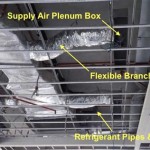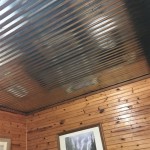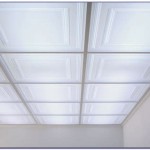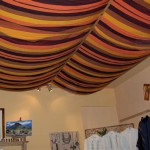Best Soundproofing for Basement Ceilings
Basement ceilings are notoriously prone to noise transmission, often amplifying sounds from the floor above and creating an unpleasant environment. Whether you're seeking to minimize the impact of footsteps, laughter, or the rumble of appliances, effective soundproofing is crucial for creating a peaceful and comfortable basement space. Implementing the right soundproofing solutions can significantly reduce noise levels and enhance your enjoyment of this valuable living area.
Soundproofing a basement ceiling involves addressing both airborne and impact noise. Airborne noise travels through the air, such as voices, music, and television sounds, while impact noise originates from vibrations, like footsteps or furniture movement. To effectively address both types of noise, a combination of soundproofing strategies is recommended, targeting the ceiling and floor above.
1. Sound-Absorbing Materials
One of the most effective ways to reduce noise in a basement is by incorporating sound-absorbing materials. These materials work by converting sound energy into heat, effectively damping noise levels. Common sound-absorbing materials include:
- Acoustic Panels: These panels are specifically designed to absorb sound waves and are available in various materials, such as fiberglass, mineral wool, and foam. They can be attached directly to the ceiling or installed as a suspended ceiling system.
- Acoustic Tiles: Similar to acoustic panels, tiles are also designed to absorb sound. They come in various shapes and sizes, offering flexibility in design and installation.
- Sound-Absorbing Insulation: Insulation materials, such as fiberglass batts or spray foam, can be strategically placed within the ceiling joists to absorb sound energy. They are particularly effective in addressing airborne noise.
- Carpet and Rugs: Carpet and rugs on the floor above the basement can help absorb sound waves, reducing the transmission of noise through the ceiling.
The effectiveness of sound-absorbing materials depends on factors like thickness, density, and the specific frequency of sound they are designed to absorb. It's important to select materials that are appropriate for the type of noise you are trying to reduce.
2. Mass-Loaded Vinyl
Mass-loaded vinyl (MLV) is a dense, flexible material that significantly reduces sound transmission. It acts as a sound barrier, effectively blocking noise from passing through the ceiling. MLV is typically installed beneath the drywall or other ceiling finish, creating a barrier that significantly reduces sound levels. Its effectiveness stems from its high density and flexibility, which effectively dampen sound waves.
3. Decoupling the Ceiling
Decoupling involves creating a physical separation between the basement ceiling and the floor above. This effectively prevents sound vibrations from being transferred directly from the floor to the ceiling. Common decoupling techniques include:
- Resilient Channels: These are metal channels that are attached to the joists above and support the drywall below. They create a small air gap between the drywall and the joists, reducing sound transmission.
- Sound Isolation Clips: These clips provide a similar decoupling effect as resilient channels, creating a small air gap between the drywall and the joists. They are often used in conjunction with resilient channels for enhanced sound isolation.
- Floating Floors: On the floor above the basement, a floating floor can be installed. This involves laying a layer of sound-absorbing material over the subfloor, followed by a layer of plywood and then the final flooring. This system acts as a springy barrier, reducing the transmission of impact noise to the basement ceiling.
Decoupling techniques are particularly effective in reducing impact noise generated by footsteps and furniture movement. By creating a physical separation, they prevent the vibrations from easily passing through the ceiling.
4. Sealing Gaps and Cracks
Even the smallest gaps and cracks in the ceiling can allow sound to penetrate. Sealing these openings is crucial for creating a more soundproof environment. This can be done using:
- Caulk: A flexible sealant that can be applied to gaps around pipes, electrical fixtures, and any other openings in the ceiling.
- Acoustic Sealant: A specialized sealant designed to reduce sound transmission. It is typically applied to larger gaps and openings.
꼼꼼한 틈새 작업은 소음 차단에 중요한 역할을 합니다. 작은 틈새를 막으면 소음이 쉽게 전달되는 것을 방지할 수 있습니다. 작은 틈새도 소음에 큰 영향을 미치므로 꼼꼼하게 막는 것이 중요합니다.
5. Soundproofing Doors and Windows
While the focus is often on the ceiling, remember that doors and windows can also contribute to noise transmission. Soundproofing these openings can significantly enhance the overall soundproofing of your basement. You can consider:
- Installing weather stripping: This helps to create a tight seal around doors and windows, reducing air leaks that can allow sound to pass through.
- Adding soundproof curtains: These curtains are specifically designed to absorb sound waves, reducing the transmission of noise through windows.
- Soundproof door seals: These seals can be installed around the perimeter of doors to create a sound barrier and prevent the transmission of noise through the door.
Soundproofing your basement ceiling is a multi-faceted approach that requires understanding the different sources of noise and implementing appropriate solutions. By combining sound-absorbing materials, mass-loaded vinyl, decoupling techniques, sealing gaps and cracks, and addressing doors and windows, you can effectively reduce noise levels and create a tranquil basement space.

Soundproofing Ceilings How To Soundproof A Ceiling

Nova Basement Remodeling Soundproofing In

How To Soundproof A Basement Ceiling

Bungled Basement Soundproofing The Expert

Soundproofing A Floor With Wood Ceiling Below Fine Homebuilding

What To Know About Soundproofing A Basement Ceiling

How To Soundproof Your Basement Ceiling Restoration By L B

How To Soundproof A Basement Ceiling Walls Floors

Walls Basement Ceiling Sound Proofing Remodeling

Ceiling Soundproofing Secrets Everything You Need To Know
Related Posts








